Ranger 9
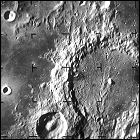 NASA launches the Ranger 9 lunar probe, built by Jet Propulsion Laboratory and intended to go directly to the moon, transmitting pictures of the surface back to Earth until it impacts the lunar surface. Despite NASA scientists’ insistence that the last Ranger probe carry scientific instruments and not just cameras, Ranger 9 is outfitted with cameras only; as a tradeoff, scientists get to nominate its target on the surface, selecting the crater Alphonsus, suspected to be a site of lunar volcanism. Ranger 8 functions flawlessly, sending live video back to Earth until impacting in the crater floor, and for the first time the terminal descent of one of the Ranger probes is broadcast live on TV. This concludes the Ranger program, as NASA now needs to switch its efforts to the unmanned Surveyor lunar landers to find out if the moon’s surface can support the weight of a manned lander. The basic architecture of the Ranger spacecraft is adopted as the heart of the ongoing Mariner planetary space probe series, up to and including the Mariner Jupiter/Saturn ’77 missions (later renamed Voyager) over a decade later.
NASA launches the Ranger 9 lunar probe, built by Jet Propulsion Laboratory and intended to go directly to the moon, transmitting pictures of the surface back to Earth until it impacts the lunar surface. Despite NASA scientists’ insistence that the last Ranger probe carry scientific instruments and not just cameras, Ranger 9 is outfitted with cameras only; as a tradeoff, scientists get to nominate its target on the surface, selecting the crater Alphonsus, suspected to be a site of lunar volcanism. Ranger 8 functions flawlessly, sending live video back to Earth until impacting in the crater floor, and for the first time the terminal descent of one of the Ranger probes is broadcast live on TV. This concludes the Ranger program, as NASA now needs to switch its efforts to the unmanned Surveyor lunar landers to find out if the moon’s surface can support the weight of a manned lander. The basic architecture of the Ranger spacecraft is adopted as the heart of the ongoing Mariner planetary space probe series, up to and including the Mariner Jupiter/Saturn ’77 missions (later renamed Voyager) over a decade later.
Ranger 8
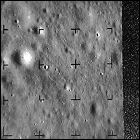 NASA launches the Ranger 8 lunar probe, built by Jet Propulsion Laboratory and intended to go directly to the moon, transmitting pictures of the surface back to Earth until it impacts the lunar surface. Ranger 8 functions flawlessly, sending pictures back to Earth until it slams into the Sea of Tranquility at high speed. Over 7,000 photos are returned, with the last complete picture transmitted prior to impact showing lunar surface features as small as five feet across.
NASA launches the Ranger 8 lunar probe, built by Jet Propulsion Laboratory and intended to go directly to the moon, transmitting pictures of the surface back to Earth until it impacts the lunar surface. Ranger 8 functions flawlessly, sending pictures back to Earth until it slams into the Sea of Tranquility at high speed. Over 7,000 photos are returned, with the last complete picture transmitted prior to impact showing lunar surface features as small as five feet across.
Ranger 7
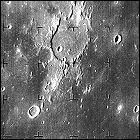 NASA launches the Ranger 7 lunar probe, built by Jet Propulsion Laboratory and intended to go directly to the moon, transmitting pictures of the surface back to Earth until it impacts the lunar surface. Months of building system redundancies into the Ranger spacecraft have made this vehicle more likely to carry out its mission, and it becomes the first of the Ranger probes to reach the moon with its eyes open. Pictures are transmitted back to Earth as Ranger 7 plunges into the lunar surface near the Ocean of Storms, with photo resolution exceeding expectations. One of the ground controllers at JPL breaks open a jar of peanuts during Ranger 7’s final approach to the moon, starting a JPL tradition that lasts to this day.
NASA launches the Ranger 7 lunar probe, built by Jet Propulsion Laboratory and intended to go directly to the moon, transmitting pictures of the surface back to Earth until it impacts the lunar surface. Months of building system redundancies into the Ranger spacecraft have made this vehicle more likely to carry out its mission, and it becomes the first of the Ranger probes to reach the moon with its eyes open. Pictures are transmitted back to Earth as Ranger 7 plunges into the lunar surface near the Ocean of Storms, with photo resolution exceeding expectations. One of the ground controllers at JPL breaks open a jar of peanuts during Ranger 7’s final approach to the moon, starting a JPL tradition that lasts to this day.
Ranger 6
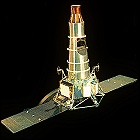 NASA launches the Ranger 6 lunar probe, built by Jet Propulsion Laboratory and intended to go directly to the moon, transmitting pictures of the surface back to Earth until it impacts the lunar surface. After a year of fundamentally redesigning the Ranger vehicle, and dropping nearly all scientific experiments on board other than the television cameras (to the dismay of the scientific community), Ranger 6 is an attempt to redeem the troubled unmanned lunar program, and it hits the moon on schedule, but a power failure has fried its cameras prior to activation. NASA launches another internal investigation, with the entire Ranger program now on the line (and highly visible, since it has been made part of the preparation for crewed Apollo lunar flights). A Congressional inquiry follows, with a very clear implication that another failed Ranger flight could have far-reaching consequences for NASA and JPL.
NASA launches the Ranger 6 lunar probe, built by Jet Propulsion Laboratory and intended to go directly to the moon, transmitting pictures of the surface back to Earth until it impacts the lunar surface. After a year of fundamentally redesigning the Ranger vehicle, and dropping nearly all scientific experiments on board other than the television cameras (to the dismay of the scientific community), Ranger 6 is an attempt to redeem the troubled unmanned lunar program, and it hits the moon on schedule, but a power failure has fried its cameras prior to activation. NASA launches another internal investigation, with the entire Ranger program now on the line (and highly visible, since it has been made part of the preparation for crewed Apollo lunar flights). A Congressional inquiry follows, with a very clear implication that another failed Ranger flight could have far-reaching consequences for NASA and JPL.
Ranger 5
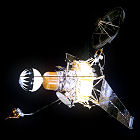 NASA launches the Ranger 5 lunar probe, built by Jet Propulsion Laboratory and intended to go directly to the moon, transmitting pictures of the surface back to Earth until it impacts the lunar surface. An onboard system failure cuts off solar power, leaving Ranger 5 on its limited supply of battery power; by the time it reaches the moon, its power-starved systems have shut down and it’s wide of the mark, missing the moon by 450 miles. A sweeping internal review of the Ranger program commences at both JPL and NASA, with the review boards finding design faults and discovering that the high-heat sterilization process, intended to keep Earthly microbes from contaminating the moon, may also be causing problems. With Ranger now considered a support program for the upcoming Apollo flights to the moon, NASA is under intense scrutiny and replaces the managers of the Ranger project prior to the next launch, also instituting another redesign of the spacecraft.
NASA launches the Ranger 5 lunar probe, built by Jet Propulsion Laboratory and intended to go directly to the moon, transmitting pictures of the surface back to Earth until it impacts the lunar surface. An onboard system failure cuts off solar power, leaving Ranger 5 on its limited supply of battery power; by the time it reaches the moon, its power-starved systems have shut down and it’s wide of the mark, missing the moon by 450 miles. A sweeping internal review of the Ranger program commences at both JPL and NASA, with the review boards finding design faults and discovering that the high-heat sterilization process, intended to keep Earthly microbes from contaminating the moon, may also be causing problems. With Ranger now considered a support program for the upcoming Apollo flights to the moon, NASA is under intense scrutiny and replaces the managers of the Ranger project prior to the next launch, also instituting another redesign of the spacecraft.
Ranger 4
 NASA launches the Ranger 4 lunar probe, built by Jet Propulsion Laboratory and intended to go directly to the moon, transmitting pictures of the surface back to Earth until it impacts the lunar surface. Another attempt to successfully launch the modified design including a seismology probe, this is the first Ranger launch in which the Agena second stage works perfectly. Unfortunately, a failure in Ranger 4’s onboard computer sends it tumbling, unable to acquire communications with Earth. Tracking the transmitter of the seismology probe, NASA determines that Ranger 4 indeed slams into the lunar far side, but without taking or transmitting a single picture, still resulting in a mission failure.
NASA launches the Ranger 4 lunar probe, built by Jet Propulsion Laboratory and intended to go directly to the moon, transmitting pictures of the surface back to Earth until it impacts the lunar surface. Another attempt to successfully launch the modified design including a seismology probe, this is the first Ranger launch in which the Agena second stage works perfectly. Unfortunately, a failure in Ranger 4’s onboard computer sends it tumbling, unable to acquire communications with Earth. Tracking the transmitter of the seismology probe, NASA determines that Ranger 4 indeed slams into the lunar far side, but without taking or transmitting a single picture, still resulting in a mission failure.
Ranger 3
 NASA launches the Ranger 3 lunar probe, built by Jet Propulsion Laboratory and intended to go directly to the moon, transmitting pictures of the surface back to Earth until it impacts the lunar surface. This modified Ranger spacecraft design also includes a balsa wood sphere, containing seismic detection experiments, which is intended to be blasted free of the main spacecraft and impact the moon separately. A problem with the Agena second stage booster puts Ranger 3 on the wrong heading with too much acceleration, missing the moon by 22,000 miles. With three straight failures to send a costly probe to the moon, NASA’s future and the future of its lunar exploration program is now under government review.
NASA launches the Ranger 3 lunar probe, built by Jet Propulsion Laboratory and intended to go directly to the moon, transmitting pictures of the surface back to Earth until it impacts the lunar surface. This modified Ranger spacecraft design also includes a balsa wood sphere, containing seismic detection experiments, which is intended to be blasted free of the main spacecraft and impact the moon separately. A problem with the Agena second stage booster puts Ranger 3 on the wrong heading with too much acceleration, missing the moon by 22,000 miles. With three straight failures to send a costly probe to the moon, NASA’s future and the future of its lunar exploration program is now under government review.
Ranger 2
 NASA launches the Ranger 2 lunar probe, intended to travel the distance from Earth to the moon and collide with the lunar surface, taking pictures and transmitting them back to Earth up to the moment of impact. Much like its predecessor in the Ranger series earlier in the year, Ranger 2’s Agena second stage booster fails, leaving it stranded in a low Earth orbit. Ranger 2 disintegrates upon reentering Earth’s atmosphere two days later, another blow for a NASA program that can’t seem to score a success.
NASA launches the Ranger 2 lunar probe, intended to travel the distance from Earth to the moon and collide with the lunar surface, taking pictures and transmitting them back to Earth up to the moment of impact. Much like its predecessor in the Ranger series earlier in the year, Ranger 2’s Agena second stage booster fails, leaving it stranded in a low Earth orbit. Ranger 2 disintegrates upon reentering Earth’s atmosphere two days later, another blow for a NASA program that can’t seem to score a success.
Ranger 1
 NASA launches the Ranger 1 lunar probe, designed to test a new vehicle configuration to reach the moon, transmitting pictures back to Earth as it falls toward impact on the lunar surface. The Agena second stage rocket designed to push Ranger 1 into a much higher orbit to escape Earth’s gravity fails, and Ranger 1 falls back into Earth’s atmosphere, disintegrating eight days after launch. This is the first of a series of setbacks for the troubled Ranger program.
NASA launches the Ranger 1 lunar probe, designed to test a new vehicle configuration to reach the moon, transmitting pictures back to Earth as it falls toward impact on the lunar surface. The Agena second stage rocket designed to push Ranger 1 into a much higher orbit to escape Earth’s gravity fails, and Ranger 1 falls back into Earth’s atmosphere, disintegrating eight days after launch. This is the first of a series of setbacks for the troubled Ranger program.
Ranger
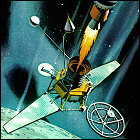 NASA and the Jet Propulsion Laboratory at Caltech begin developing a set of guidelines for what is projected to be a series of five lunar missions, involving vehicles that will photograph the moon from approach to impact, transmitting the images back to Earth live. These guidelines are the beginning of the Ranger program, though technical difficulties will eventually result in nearly twice the number of Ranger unmanned vehicles than originally anticipated.
NASA and the Jet Propulsion Laboratory at Caltech begin developing a set of guidelines for what is projected to be a series of five lunar missions, involving vehicles that will photograph the moon from approach to impact, transmitting the images back to Earth live. These guidelines are the beginning of the Ranger program, though technical difficulties will eventually result in nearly twice the number of Ranger unmanned vehicles than originally anticipated.